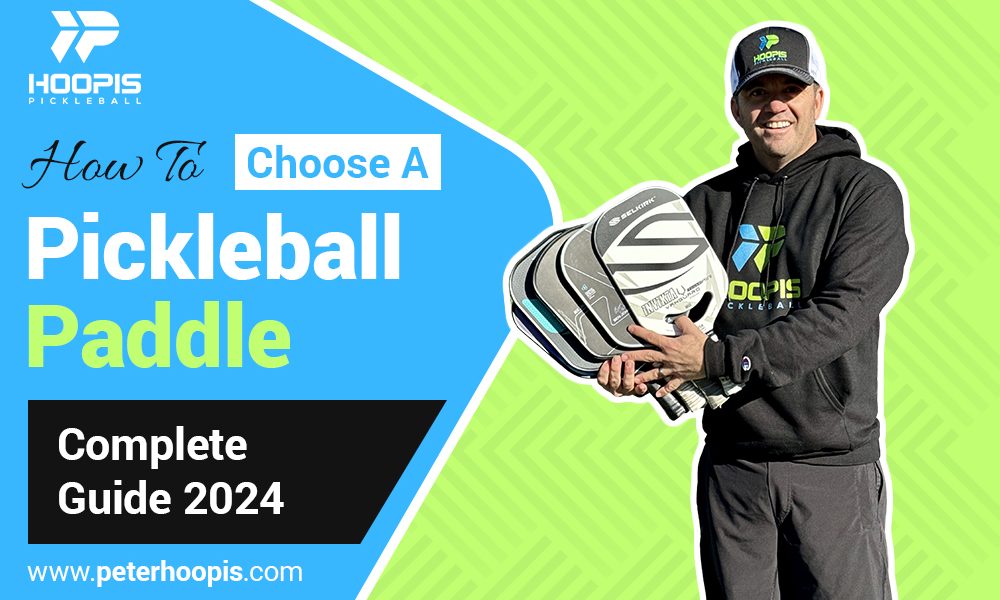Choosing the right pickleball paddle is like finding the perfect pair of shoes—it needs to fit your style, feel comfortable, and give you the confidence to play your best game.
But with so many paddles out there, how do you even start? Should you go for lightweight or heavy? Fiberglass or graphite? And what about grip size?
Don’t worry—we’ve got you covered. In this post, we’ll break down everything you need to know on how to choose a pickleball paddle for your game. Whether you’re a beginner or a seasoned pro, this guide will help you make the right choice without the guesswork.
Let’s get started!
How To Choose A Pickleball Paddle
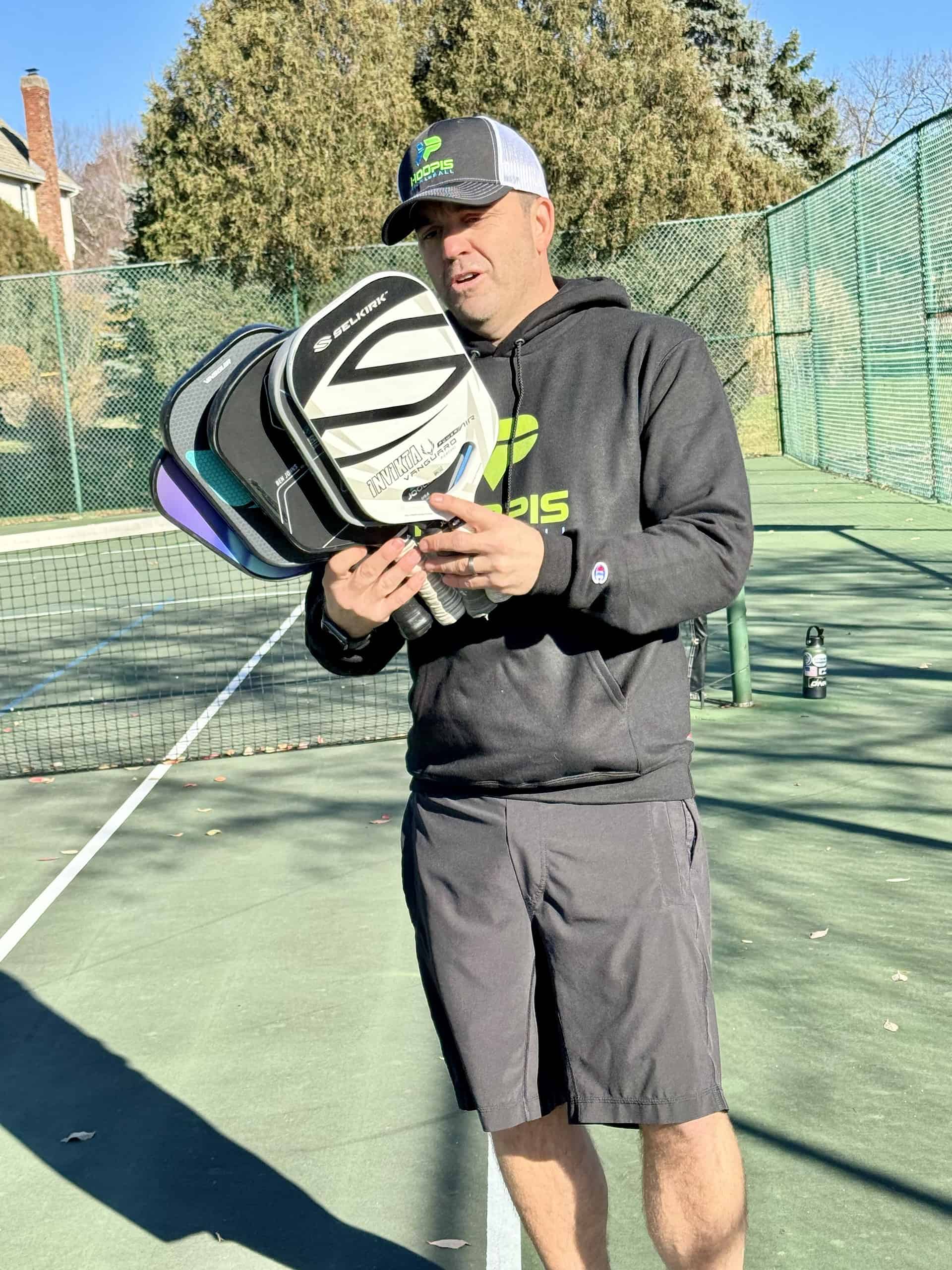
Picking the perfect pickleball paddle might seem tricky at first, but it’s all about understanding what works best for you. There’s no one-size-fits-all answer because every player is unique. Your paddle should complement your playing style, skill level, and personal preferences.
When choosing a paddle, here are the main things to consider:
- Weight: The weight of a paddle impacts how it feels in your hand and how it performs on the court. Lighter paddles are easier to handle, while heavier paddles add power to your shots.
- Material: Paddles come in a variety of materials—wood, composite, and graphite—each offering different levels of performance and durability.
- Grip Size: A comfortable grip is key for maintaining control and avoiding strain. Too big or too small, and your game could suffer.
- Core and Surface: Modern paddles feature different core types (polymer, nomex, aluminum) and surfaces (smooth, textured) that can affect power, control, and spin.
- Price and Features: Paddles range from budget-friendly to premium models with advanced features. Knowing your budget can help narrow down your options.
Remember, the best way to find the right paddle is to test a few if possible. What feels great in someone else’s hand might not be the perfect fit for you.
In the next sections, we’ll go deeper into each of these factors to help you find your perfect match.
How Your Playing Style Influences Paddle Choice
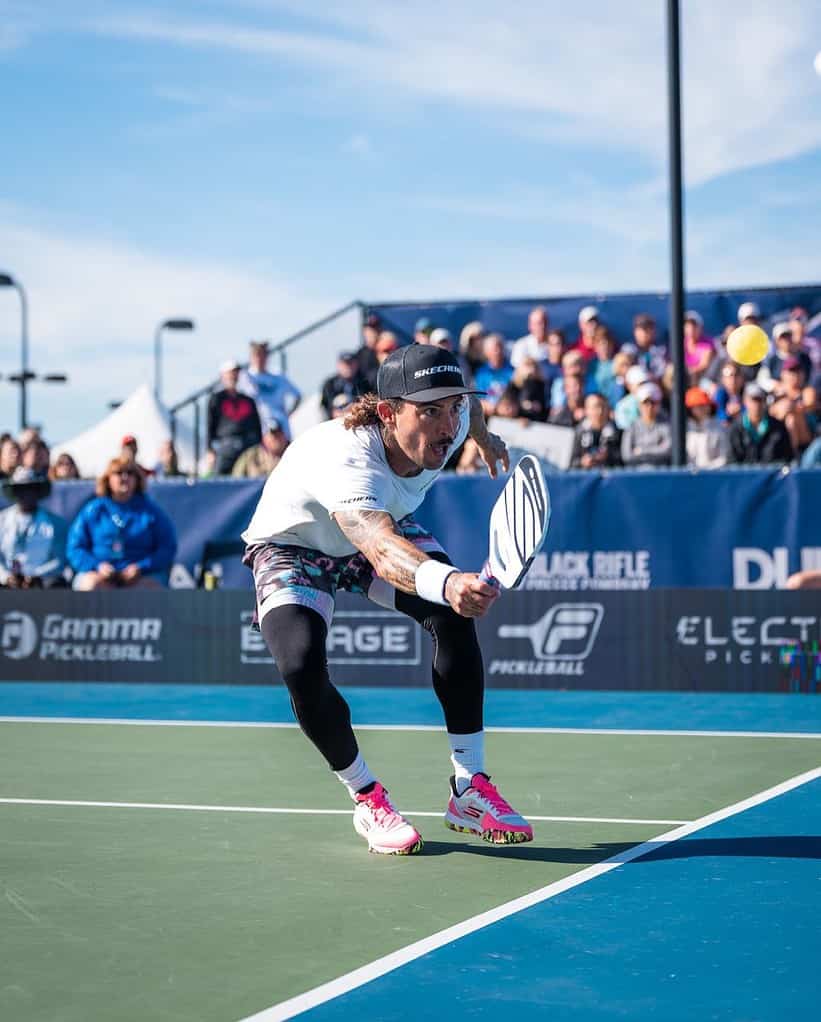
Your playing style is a huge factor when it comes to choosing the perfect pickleball paddle. Whether you’re all about power, control, or somewhere in between, your paddle should work with your natural game—not against it.
Here’s a breakdown of how playing style can guide your decision:
Power Players
- If you love smashing the ball and hitting with force, look for a paddle that helps you amplify that power.
- Paddles with a heavier weight and a harder surface (like graphite or composite) can pack a serious punch.
- Keep in mind: power-focused paddles might sacrifice a bit of control, so precision shots could require extra finesse.
Control Players
- If you prefer precision and finesse, focus on paddles that offer better touch and accuracy.
- Lightweight to mid-weight paddles with a softer polymer core are great for players who want to place the ball exactly where they want it.
- These paddles often have textured surfaces, making them ideal for adding spin to your shots.
All-Around Players
- Many players fall somewhere in between power and control. If this sounds like you, a balanced paddle is your best bet.
- Mid-weight paddles with a composite surface and polymer core offer a great mix of power, control, and versatility.
- These paddles are perfect for adapting to any playing style as you grow and improve your game.
Finding Your Fit
Not sure where your style fits? That’s okay! If you’re just starting out, go for a paddle with a mid-weight design and balanced features. It’s a great all-around option while you discover what works best for you.
Remember, your paddle should complement your strengths and help you play with confidence. A little trial and error goes a long way in finding your perfect match!
Determine Your Budget
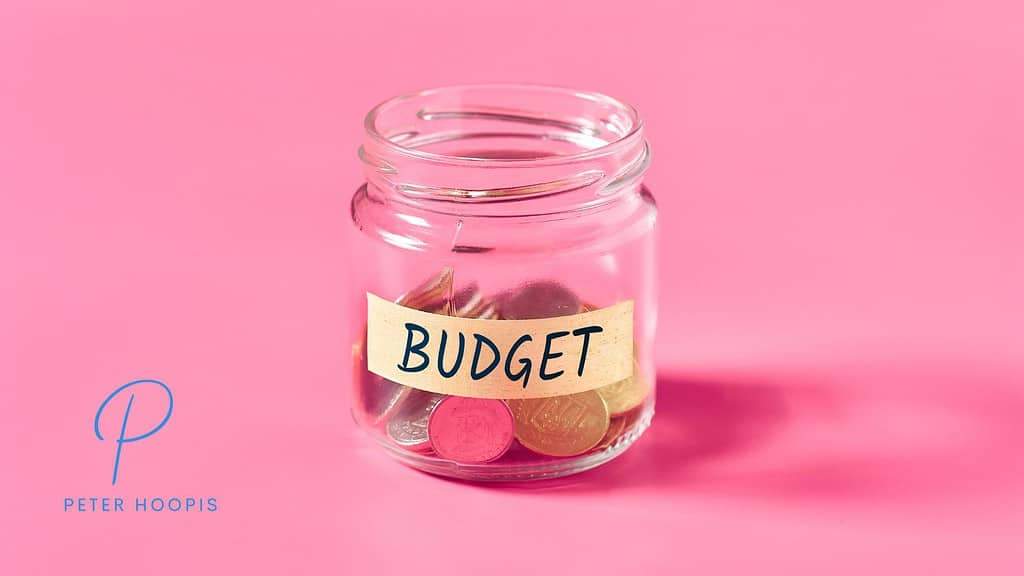
When it comes to pickleball paddles, your budget is an important factor to consider. The good news? There’s a paddle out there for every price range, whether you’re looking for a beginner-friendly option or a high-end model packed with advanced features.
Here’s a quick breakdown of what you can expect at different price points:
Budget-Friendly ($50–$75)
- Great for beginners or casual players who are just getting started.
- Typically made from wood or basic composite materials.
- These paddles are durable but may feel heavier and less refined in performance compared to higher-end models.
Mid-Range ($75–$150)
- Perfect for players who want quality without breaking the bank.
- Usually made from composite or graphite materials, offering a good mix of power, control, and comfort.
- Many mid-range paddles also include features like ergonomic grips or textured surfaces for added spin.
High-End ($150+)
- Designed for serious players or those looking for top-of-the-line performance.
- Lightweight, high-tech materials like carbon fiber or advanced polymer cores are common.
- These paddles often feature innovative designs, larger sweet spots, and improved durability.
How to Decide
Think about how often you play and what you want from your paddle:
- If you’re new to pickleball or play occasionally, start with a budget or mid-range paddle.
- If you’re playing regularly or looking to improve your game, a mid-range or high-end paddle might be worth the investment.
- For competitive players, investing in a premium paddle with advanced features can give you an edge on the court.
Remember, price doesn’t always equal performance. The best paddle for you is one that feels good in your hand and supports your game—whether it’s $50 or $200.
Look at Paddle Shape
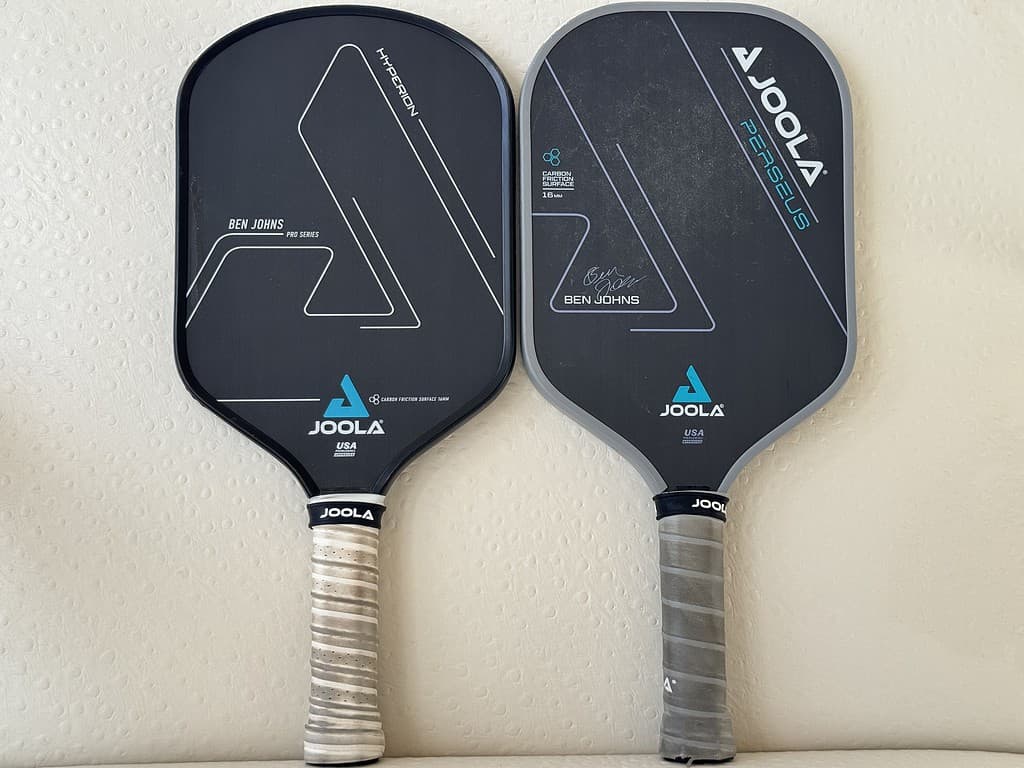
Believe it or not, the shape of your paddle can have a big impact on how you play. While the standard paddle shape is the most common, there are other designs that cater to different playing styles and preferences. Let’s break it down!
Standard Shape
- Dimensions: 16 inches long by 8 inches wide (combined length and width can’t exceed 24 inches).
- This is the go-to option for most players because it offers a balanced mix of power, control, and a generous sweet spot.
- If you’re unsure where to start, stick with the standard shape—it’s versatile and reliable.
Elongated Shape
- Dimensions: Narrower width but extended length (e.g., 17 inches long and 7 inches wide).
- Designed for players who want extra reach, making it easier to return wide shots or play at the net.
- These paddles have a smaller sweet spot, so precision is key.
Wide-Body Shape
- Dimensions: Shorter length and wider face (e.g., 15 inches long and 8.5 inches wide).
- Offers the largest sweet spot, making it great for beginners or players who prioritize control.
- The wider surface is forgiving and helps with mishits, but it sacrifices a bit of reach.
Blade Shape
- Dimensions: Even longer and narrower than elongated paddles.
- Often used by tennis players transitioning to pickleball because of its similar feel.
- Ideal for advanced players who want maximum reach but require skill to handle the smaller hitting surface.
Which Shape is Right for You?
- If you’re a beginner or recreational player, start with a standard or wide-body paddle for ease of use.
- For intermediate or advanced players looking to level up, try an elongated or blade paddle to enhance your game.
- Always consider your comfort and natural swing when choosing a shape—what feels good in your hand is just as important as the specs.
Understand Paddle Core Material
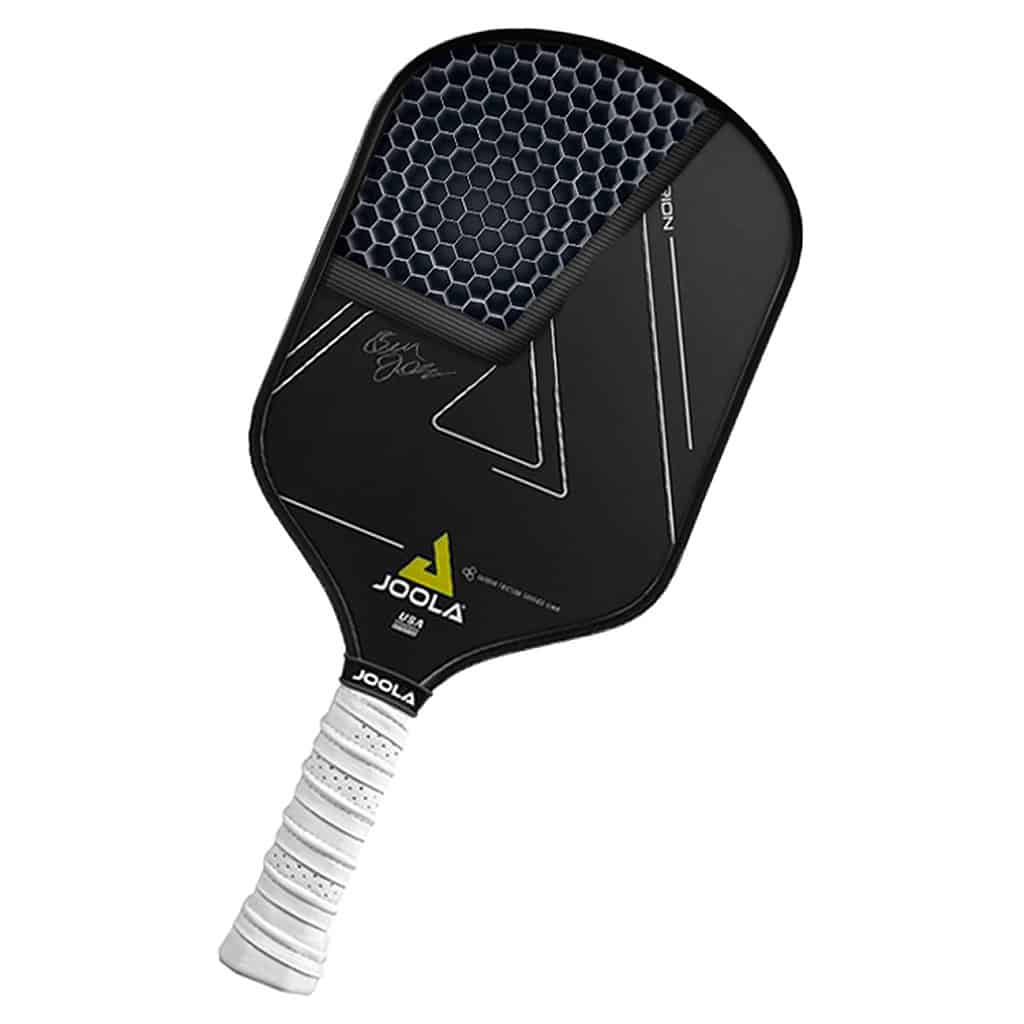
The core of a pickleball paddle is its heart and soul—it determines how the paddle feels, plays, and responds to your shots. Paddle cores are typically made from three main materials, each with unique qualities that cater to different playing styles. Let’s break them down:
Polymer Core
- What it is: Made from a honeycomb structure of polymer (plastic).
- Why players love it: It’s soft, quiet, and provides excellent control.
- Best for: Players who focus on precision and finesse. It’s also great for those who play in noise-restricted areas, as polymer cores are quieter than other options.
Nomex Core
- What it is: A honeycomb structure made from a lightweight, rigid material.
- Why players love it: It’s hard, durable, and provides extra power for aggressive shots.
- Best for: Power players who like to hit hard and fast. However, it’s louder than other cores, so keep that in mind if noise is a concern.
Aluminum Core
- What it is: A honeycomb structure made from aluminum.
- Why players love it: It’s lightweight and offers excellent touch and control.
- Best for: Players who value finesse and soft shots. Aluminum cores are perfect for strategic gameplay at the net, but they may not provide as much power.
Which Core Should You Choose?
- If you’re just starting out, polymer cores are a great all-around option.
- If you love power and fast-paced games, nomex is your best bet.
- If you enjoy strategic play and soft, controlled shots, go for aluminum.
Ultimately, the best core material for you depends on your playing style and preferences. Testing different cores is the best way to see which one feels just right!
Face Material
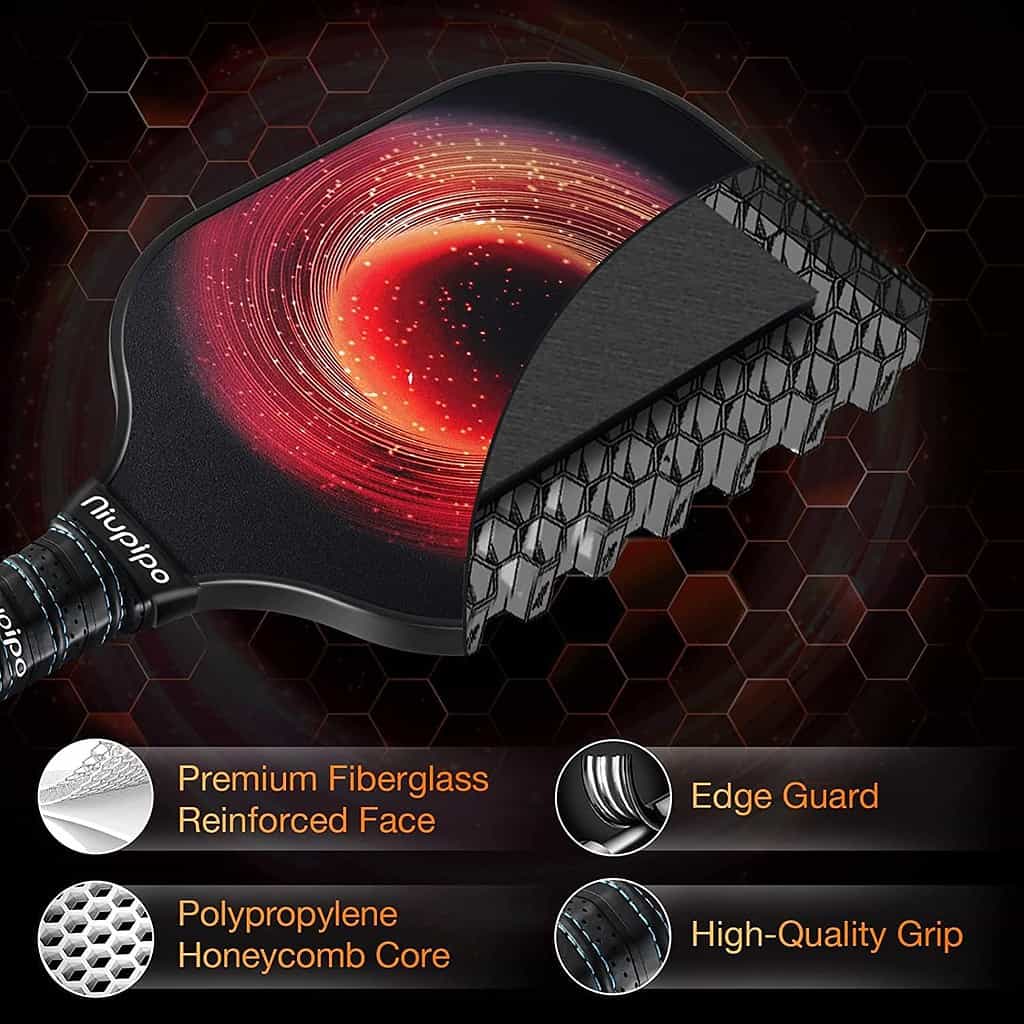
The material on the face (or surface) of a pickleball paddle plays a key role in how the ball interacts with the paddle. It affects everything from spin to power to overall durability. Let’s explore the most common face materials and what they bring to your game:
Graphite Face
- What it is: A lightweight, rigid surface that’s incredibly strong.
- Why players love it: Graphite paddles offer excellent precision and a consistent feel. They’re also lightweight, making them easy to maneuver.
- Best for: Players who value touch and finesse, especially in fast-paced, close-to-the-net games.
Fiberglass (Composite) Face
- What it is: A slightly heavier material known for its power and responsiveness.
- Why players love it: Fiberglass paddles add a bit more “pop” to your shots, making them great for driving the ball with speed.
- Best for: Players who like to hit hard or need help generating power.
Carbon Fiber Face
- What it is: A premium, durable material that’s lightweight and offers incredible control.
- Why players love it: Carbon fiber paddles provide a soft touch and a large sweet spot, helping you place shots with precision. They also tend to dampen vibrations, which is easier on your arm.
- Best for: Advanced players who want high-level control without sacrificing power.
Hybrid Materials
- What it is: Some paddles combine materials, like a fiberglass surface with a carbon fiber overlay, to offer the best of both worlds.
- Why players love it: Hybrids aim to balance power, control, and durability.
- Best for: Players who want a versatile paddle that adapts to different playing styles.
How to Choose the Right Face Material
- If you’re all about control and precision, graphite or carbon fiber is your best bet.
- If you want more power in your shots, go for fiberglass.
- If you’re looking for versatility and can’t decide, a hybrid paddle might be perfect for you.
Testing different face materials is key to finding the one that feels most comfortable and complements your game. The right face material can elevate your play and give you an edge on the court.
Handle Length
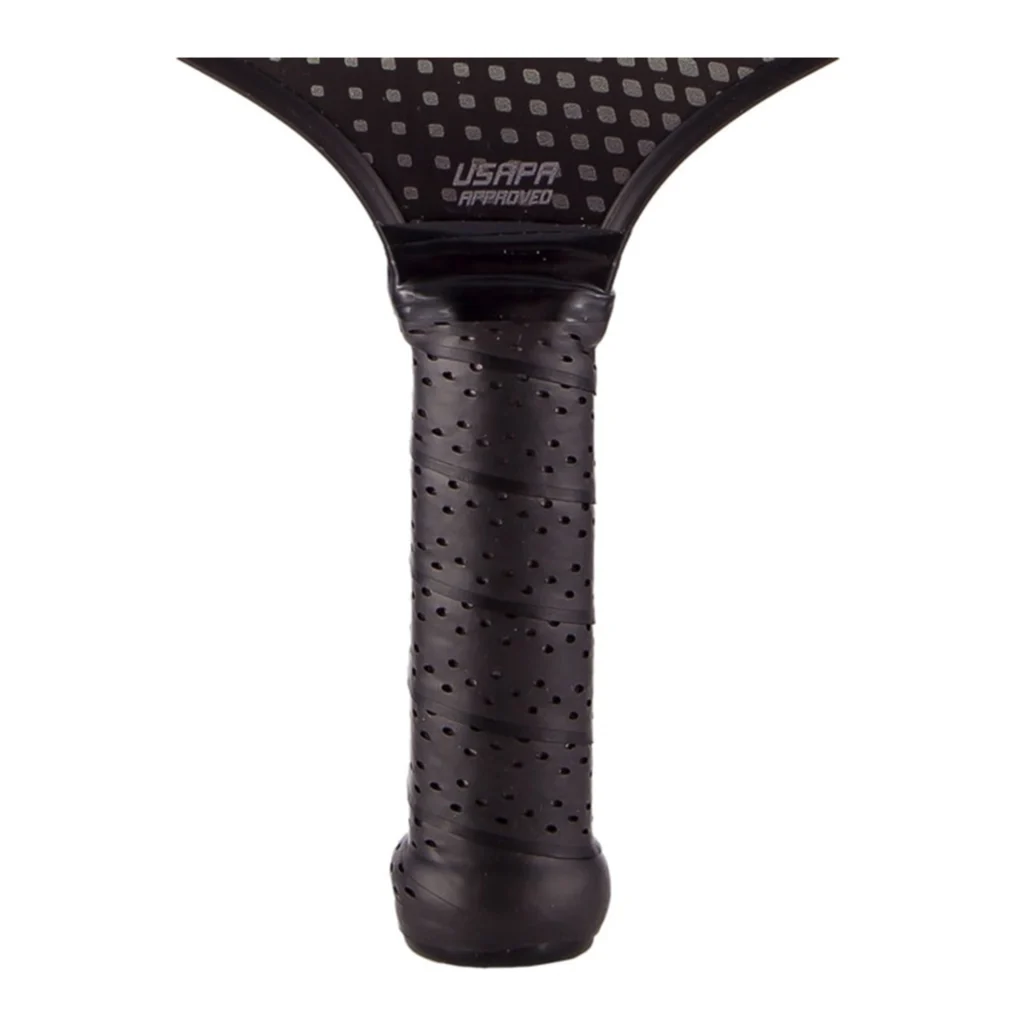
A longer handle moves the sweet spot higher up the paddle face, away from your hand. This results in a higher sweet spot, which means more paddle head speed and, subsequently, more power when hitting the ball. Think of a tennis racquet. Tennis players will typically prefer a longer handle since most are used to two hands for their backhands.
On the other hand, a shorter handle moves the sweet spot closer to your hand and enlarges the paddle’s surface area, resulting in a bigger sweet spot and better consistency in paddle performance across the paddle face, leading to better control. This can be better for people with small hands. Think of a ping pong (or table tennis) paddle. Handle length is different than grip size…we will get to that later.
Overall Paddle Weight
Weight is one of the most important things to consider when picking a paddle. It impacts how the paddle feels in your hand, how easy it is to maneuver, and even how it affects your arm during long games.
Paddles typically fall into three categories:
- Lightweight (6.5–7.2 oz): Easy to swing, great for quick reactions, and ideal for players who like finesse. However, they can lack power.
- Mid-weight (7.3–8.4 oz): A balance of power and control, making it the most popular choice for players of all levels.
- Heavyweight (8.5+ oz): Adds power to your shots but can be harder to maneuver and more taxing on the arm.
How to Choose the Right Weight for You
- If you’re just starting out, a mid-weight paddle is a safe bet—it offers versatility while you develop your style.
- If you have wrist or arm issues, a lightweight paddle can reduce strain.
- If you’re looking for more power in your game, a heavyweight paddle might be your go-to.
Your playing style, physical strength, and even how the paddle feels in your hand all come into play when deciding on weight. Testing different weights is the best way to figure out what works for you.
Should I get an Edge Guard or Edgeless Paddle?
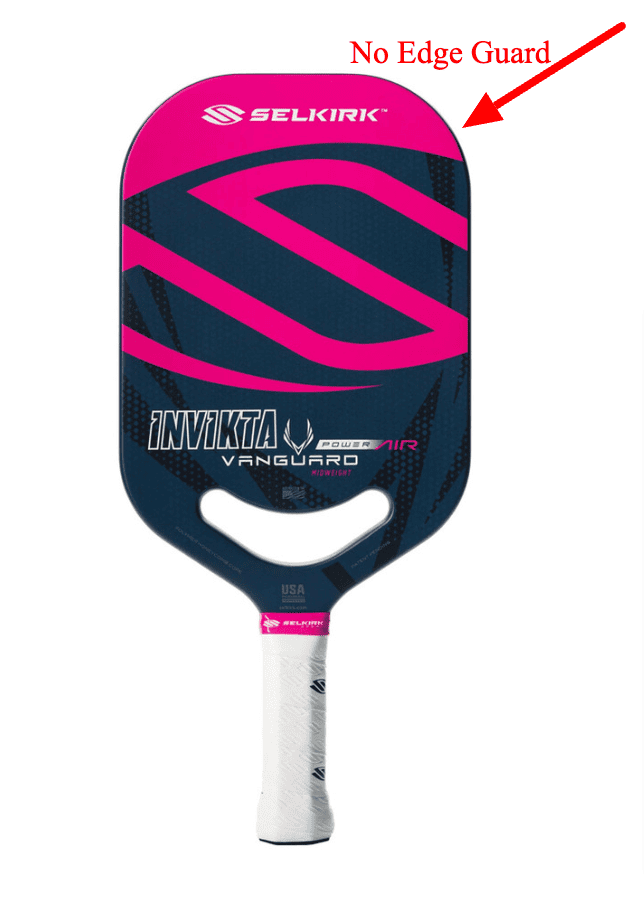
When it comes to selecting the best pickleball paddle, I personally think whether to go for a paddle with an edge guard or an edgeless one is an important decision.
While both types of pickleball paddles have their advantages and disadvantages, it ultimately comes down to what you value most in your gameplay.
If you’re someone who likes to reach for low shots or frequently hits the ground while playing, then a paddle with an edge guard may be the way to go. The edge guard on these paddles protects the edges of the paddle from damage upon impact, which can be especially important if you find yourself frequently scraping the ground during play.
On the other hand, if control and precision are your priorities, then you may prefer an edgeless paddle. These paddles have a uniform edge which creates a clean surface area for hitting the ball. This can result in a more consistent strike and better ball control overall.
Ultimately, the choice between an edge-guarded or an edgeless paddle comes down to personal preference and playing style. It may take a little experimentation and practice before you find the right pickleball paddle that feels comfortable and suits your playing style.
Conclusion
Choosing the right pickleball paddle can feel like a big decision, but it doesn’t have to be overwhelming. By understanding the factors that matter most—like weight, shape, core material, and face material—you’re well on your way to finding a paddle that feels like it was made just for you.
Remember, there’s no one-size-fits-all answer. Your ideal paddle is the one that matches your playing style, feels great in your hand, and makes you excited to hit the court. Whether you’re a beginner just starting out or an experienced player looking to level up, taking the time to find the right paddle is worth it.
So, test a few paddles, trust your instincts, and don’t be afraid to experiment. The perfect paddle isn’t just about the specs—it’s about what feels right for your game.
Now that you’ve got the tools to make an informed choice, it’s time to get out there and play. Game on!

